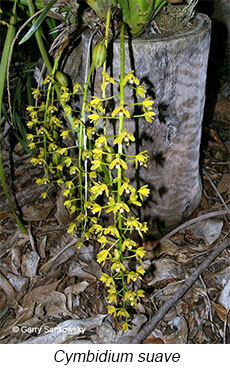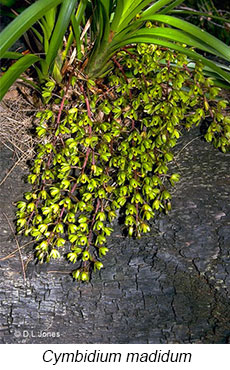<< BACK TO PROJECT LIST
Project: 334/2020
Title: Phylogeography of Australian Cymbidium orchids – assessing intraspecific taxonomy and the influence of biogeographic barriers on intraspecific genetic diversity using target sequence capture
Applicant: Dr Lalita Simpson
Institution: Australian Tropical Herbarium, James Cook University, Cairns, Qld.
Cymbidium is an important group of orchids in the horticultural industry, prized for over 2700 years for the aesthetic appeal of their flowers and suitability as house plants. The genus is morphologically and ecologically diverse comprising ~52 species distributed in tropical to temperate habitats in Asia and Australasia. In Australia, three native Cymbidium species are found, and all are endemic to this region. Each species is ecologically distinct, predominantly occurring in distinct vegetation types, and all occupy a broad geographic distribution spanning multiple phytogeographic regions. Morphological variation has been identified within the Australian species and infraspecific taxonomic groups have been described. However, these taxonomic concepts have never been assessed through a molecular phylogenetic framework and thus the phylogeographic relationships among these groups remains poorly understood. Furthermore, previous studies have only partially resolved evolutionary relationships and infrageneric relationships within Cymbidium and evolutionary relationships between the Australian species and their close relatives within Cymbidium remains poorly understood.
This project aims to provide a greater understanding of taxonomic delimitation and phylogeography within Australia’s Cymbidium orchid species, their environmental requirements and vulnerability to climate change. Additionally, this project seeks to better understand the evolutionary relationships and biogeographic history among the Australian species and their close relatives within Cymbidium. The study will utilise collections archived in Australian and international Herbaria and cutting-edge molecular techniques to generate genomic sequence data for reconstructing evolutionary relationships and collection records for environmental niche modelling.



